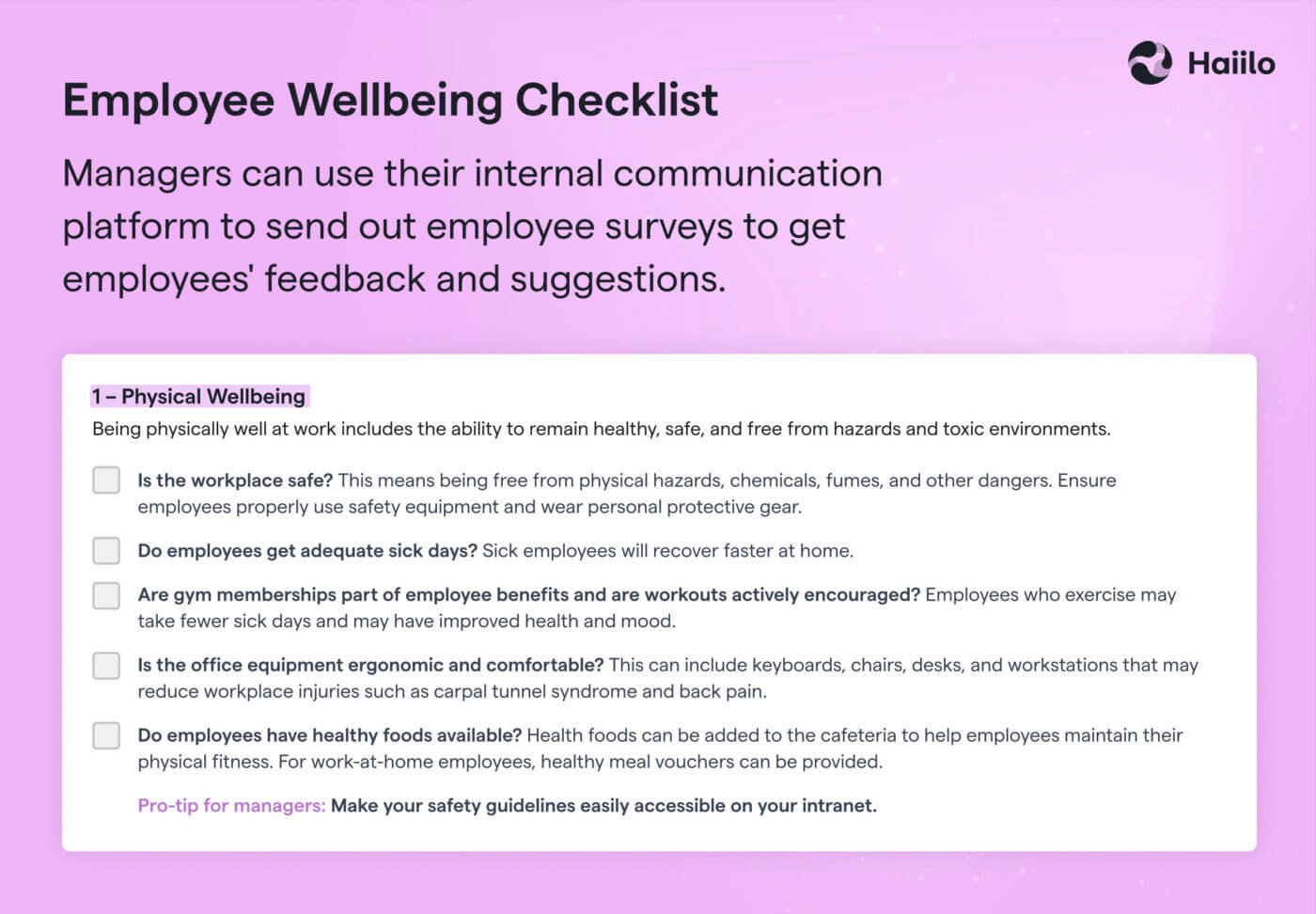Creating an employee experience strategy is a tall order for many organizations. It requires a big change in mindset – changes in the way organizations attract, engage, develop, and retain their people.
📙 Since employee communication is an important part of employee experience, check our guide Building a Better Company with Internal Communications.
Building a great employee experience strategy is up to you. However, some tools can make it easier. Let us show you how
What is Employee Experience Strategy?
Employee experience is the accumulation of every event and stage of an employee’s journey in a company. It begins when employees apply for an open position and continues until their exit interview.
Employee experience strategy means evaluating every stage of employees’ journey and identifying moments, events, and interactions that employees have throughout their employment journey. These moments then need to be designed in a way that fits employees’ beliefs, preferences, needs, and motivations.
Having an employee experience strategy is now one of the main priorities for human resources and other professionals. Being aware of the benefits of providing positive employee experience, many organizations are now taking a strategic approach to designing work experience employees will appreciate.
According to a global study by the research and advisory firm Gartner, in 2019 companies spent an average of $2,420 per person on efforts to enhance the employee experience, and this number continues to grow.
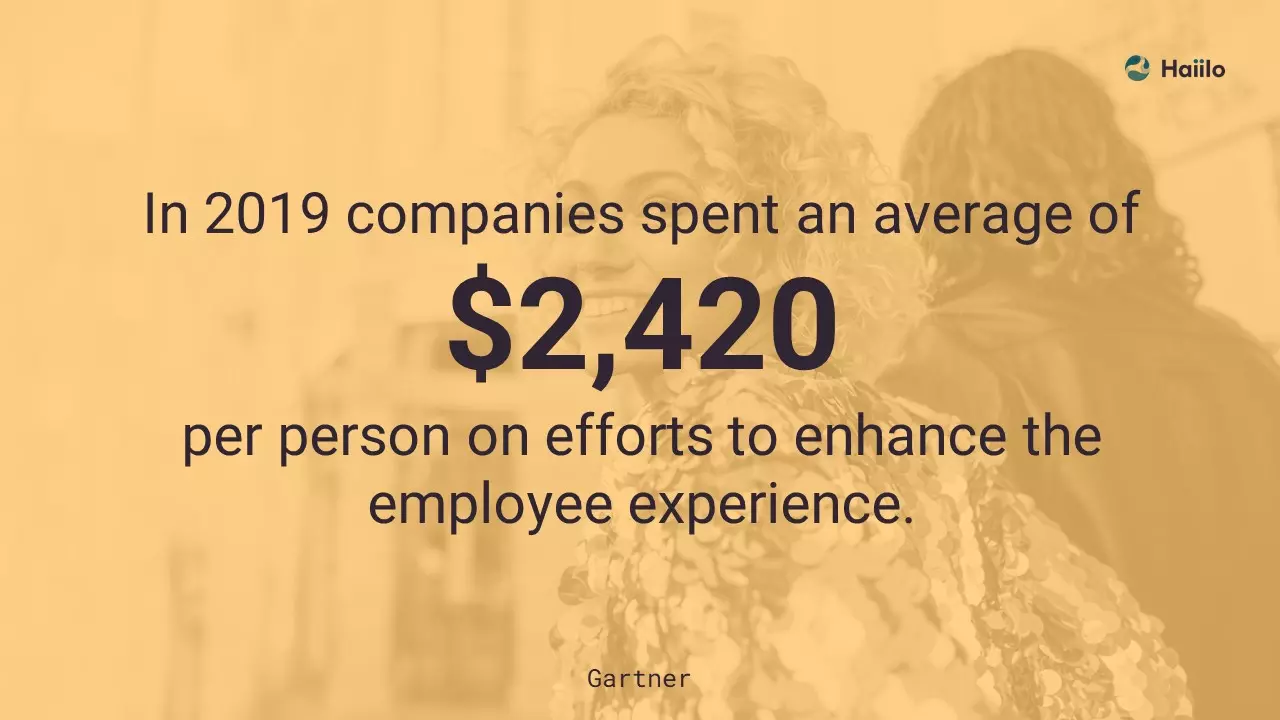
Let’s now take a look into how to design and manage a good employee experience strategy.
7 Steps to Implement and Manage a Successful EX Strategy
The fact that only 13% of employees report being fully satisfied with their experience explains how hard it is to implement a successful EX strategy. Even though this approach takes time and requires persistence, there are certain steps every organization should follow when crafting an employee experience strategy.
Before digging deeper into how to design a good experience, it is important to understand what makes a good employee experience.
Here is a great overview by Josh Bersin:
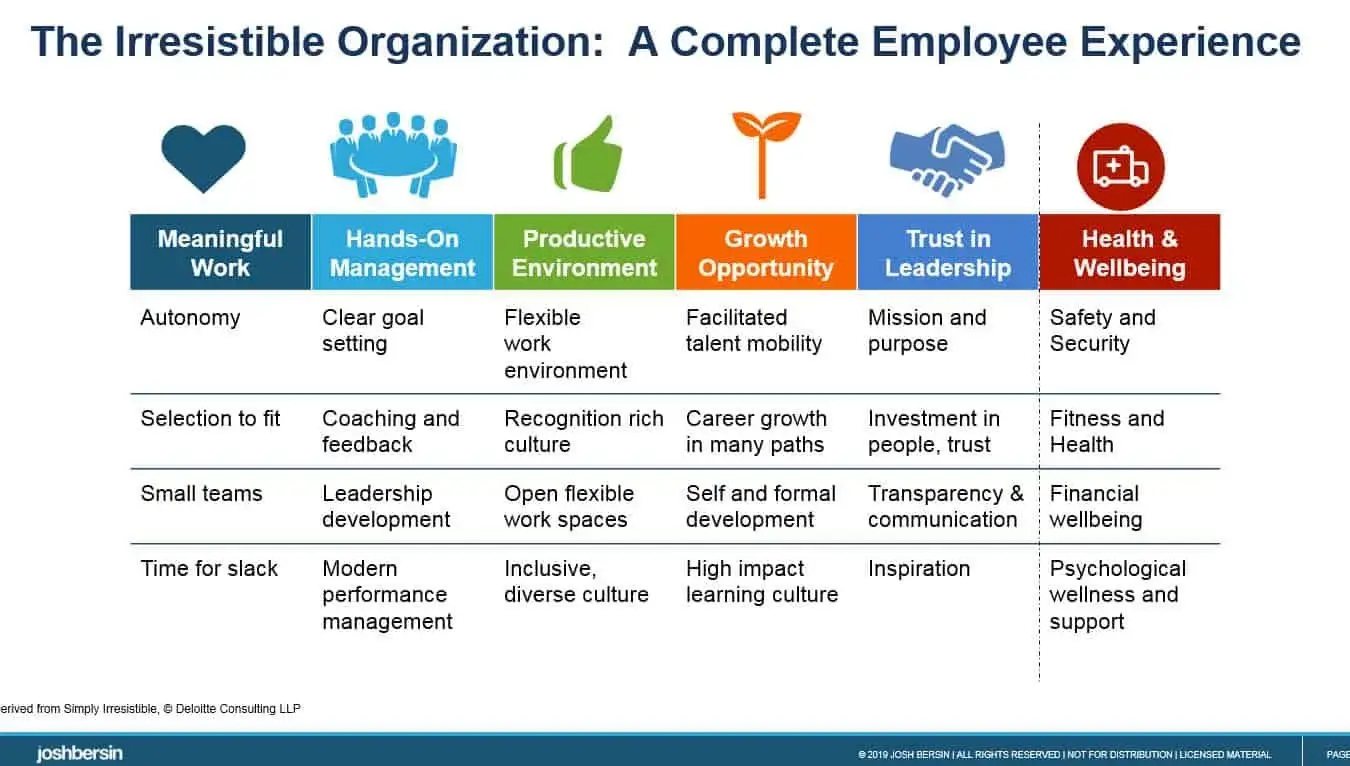
1. Make EX an important part of your company culture
As mentioned earlier, designing an employee experience strategy is all about mindset. This is why a human-centric approach needs to be built into the organization’s culture and core company values. Making people the priority and seeing them as the most important assets a company can have is an absolute prerequisite for building a successful EX strategy.
2. Assess your current people management strategy
The next step is to evaluate your current talent management strategy. In this step, it is important to take into consideration the three most important EX areas defined by Jacob Morgan:
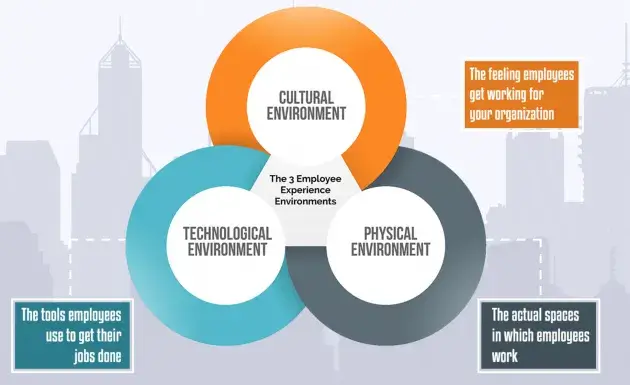
- The cultural: how employees feel when they’re inside an organization, which is impacted by the organizational structure, leadership style, compensation, and benefits, etc.
- The physical: anything that can be seen, heard, touched, and tasted like desks, chairs, remote office equipment, art, and meals.
- The technological: the overall experience of the tools an employee needs to do their jobs, including the user interface, mobile devices, and desktop computers.
The best way to evaluate your employees’ current experience is by listening to your own employees and driving two-way communications. Create focus groups or employee surveys and ask them questions such as:
- Do you feel like our company culture aligns with your own values and beliefs?
- Do you feel like you get clear directions from your manager?
- How would you rate your relationship with your manager?
- Are you satisfied with our current career development initiatives?
- Do you feel like you have all the necessary equipment needed to work from home and do your job successfully?
- Do you find technologies that our organization uses intuitive and easy to use?
- Is there any other technology that would make your working experience better?
Gathering feedback from employees, especially those who are hard to reach, can be a tall order for organizations. Using the right technology is crucial here. Modern employee communications solutions with built-in, mobile-friendly survey capabilities make collecting feedback much faster and efficient.
3. Identify the bottlenecks and define objectives
Once you collect feedback from your employees, you can move on to identifying the existing drivers of negative employee experience in your organization. Based on insights, you can define goals that directly impact your employees’ overall working experience, engagement, and retention.
Here are just a few examples of objectives you can set for your EX strategy:
- Clearly communicate the company’s mission, vision, and values
- Eliminate cross-departmental silos
- Train managers on the importance of employee feedback and recognition
- Enable employees to give and receive on-the-spot feedback
- Implement new technology that facilitates crisis communication towards deskless employees
- Design and implement new leadership and career development initiatives
- Implement new employee wellbeing programs to support employees physical, mental, and financial health
- Implement personalized learning and development programs
4. Define employee personas
The same way marketers have to define their buyer personas, employers need to define and better understand their employee personas.
As today’s workforce is highly multigenerational, it is very important to understand their differences in order to provide more personalized workplace experiences.
To define employee personas, it is best to engage your own employees from different departments, of different age, cultures, and seniority levels. For example, you can ask these different employee groups about what motivates them at work and what drives them to do their best. While younger generations may be more driven by career growth opportunities, older generations may be more motivated by financial stability and work-life balance.
Based on these insights, you can create employee personas to provide more personalized employee experience and benefits.
If you are looking for help designing employee personas, here is a great guide by SHRM!
5. Create employee journey maps
You can try to understand your people’s experience through their eyes and adapt accordingly. For this, many organizations use design thinking methodology. Deloitte Human Capital Consulting explains design thinking rather well: “Study, listen to, and learn what employees are doing every day and discover new ways to simplify work and improve productivity, performance, and engagement.” This can be done with journey mapping or empathy mapping.
There are multiple different ways to create employee journey maps, and here is one example created by Tech Target.
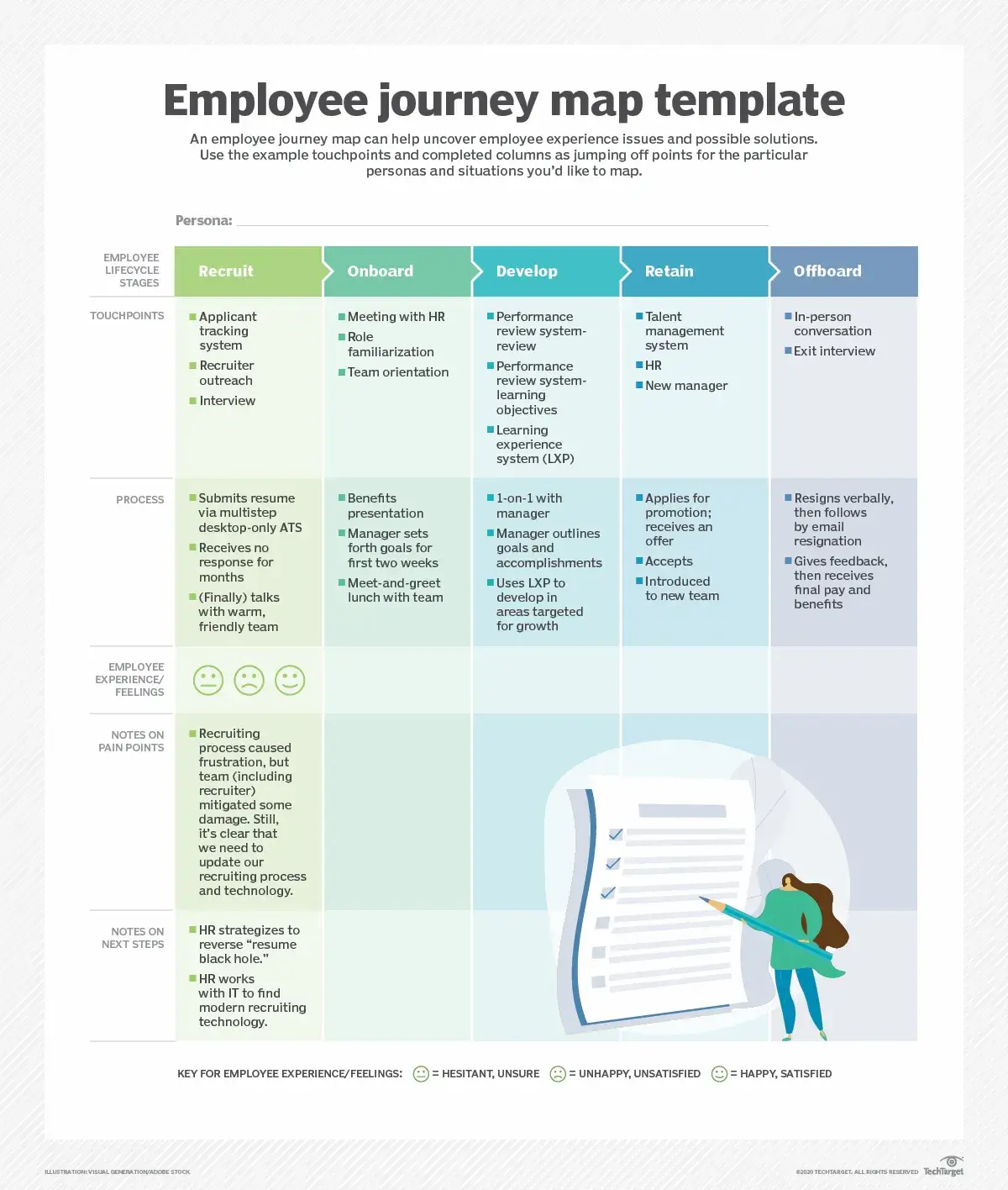
6. Identify moments that matters (by actively listening to your employees)
Throughout employees’ journeys, it is also important to understand the moments that matter the most to the previously defined personas. While some people may care mostly about compensation, others may be more driven by career development.
Innovative companies turn to employees for inspiration, and they take their employees’ share of voice very seriously. For example, Cisco, IBM, GE, Airbnb, and many other companies have used hackathons to collect employee ideas and design new approaches to performance management, workplace design, benefits, learning and development, and rewards. This co-creation approach engages employees directly in designing a “perfect” employee experience.
7. Focus on personalization
Implementing an employee experience strategy is ultimately about creating personalized experiences in the workplace. Besides defining employee personas and moments that matter, the role of technology in ensuring personalized experiences is crucial.
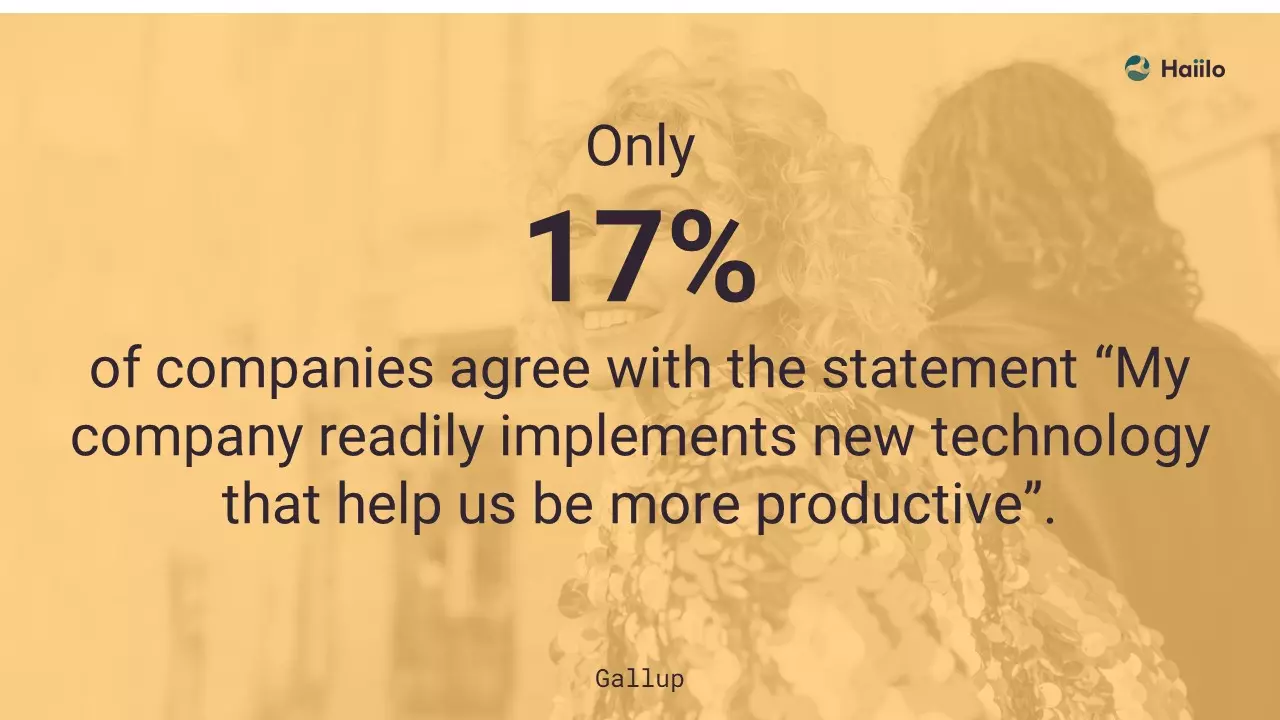
Advanced workplace engagement apps, communication platforms, and productivity tools that focus on personalization can go a long way in making one’s working experience more enjoyable.
Today, HR technology is still not providing consumer-grade user interfaces, which are expected in the workplace. Workplace programs aren’t reaching their potential due to lack of personalization resulting in low user adoption. Therefore, the digital workplace is a big driver for personalization of employee experience.
📙 Download our guide How to Boost Employee Engagement with Communication Tools.
5 Challenges Organizations Face When Building an Employee Experience Strategy
Most organizations encounter some challenges when designing and implementing employee experience strategy. The following 5 blockers are some of the most common reasons why employee experience projects fail.
Not enough employee feedback
Earlier, we saw that employees’ feedback is extremely important in multiple stages of defining an employee experience strategy.
Yet, according to research, 56% of employees report that “their employer should understand them as well as they are expected to understand their customers”, while only 39% of employees in the study felt their workplaces were fulfilling this expectation.
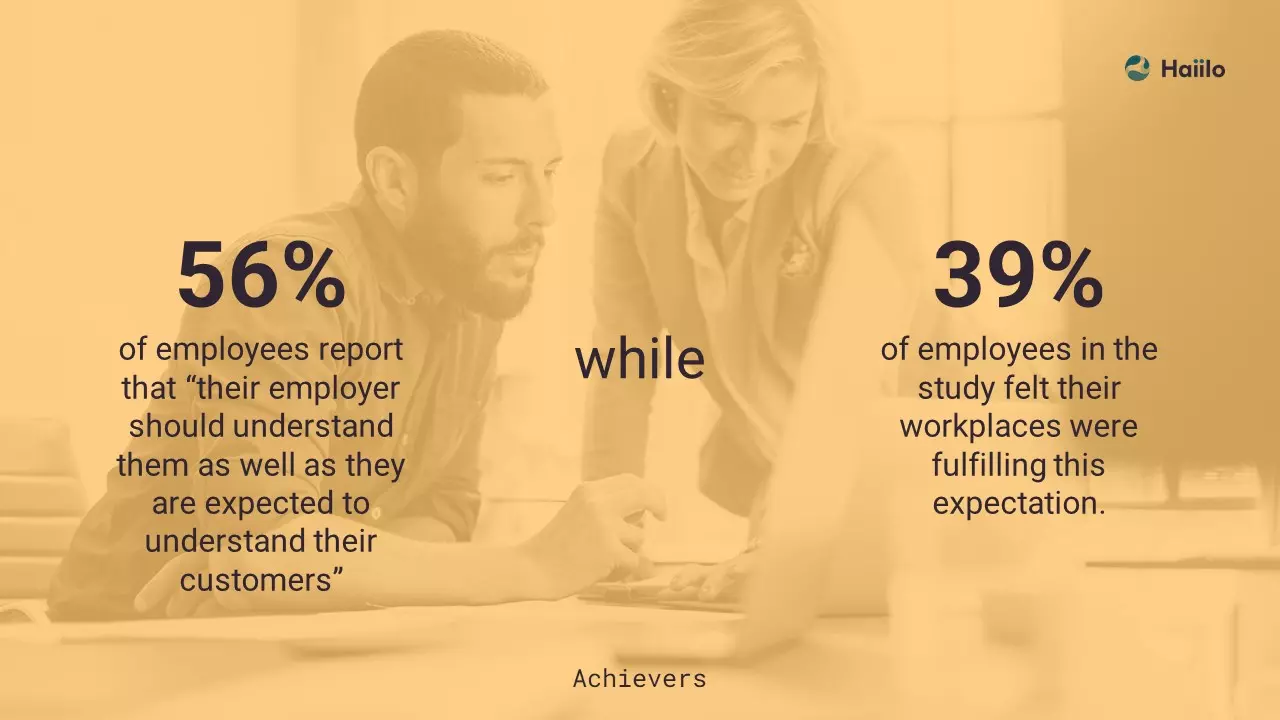
Without knowing your employees’ thoughts, preferences, opinions, and challenges, designing a proper EX strategy becomes a mission impossible.
Lack of C-level support
Getting leadership’s support to redefine workplace experience is crucial. If leaders don’t understand the importance of providing positive employee experience, the project will be destined to fail.
On the other hand, CEOs who understand the importance of EX have taken a step further and created a designated C-suite role of Employee Experience Officer.
💡 Also learn about the role of employee experience in retaining top talent.
Siloed HR teams
Another bottleneck in designing an employee experience strategy are siloed HR teams. Siloed HR departments often find it difficult to obtain the resources needed to address an integrated set of priorities, which range from management practices, benefits and, often, the work culture itself.
Remember, employee experience is not just HR’s job.
As well explained by Josh Bersin:
While the EX agenda may have started in HR, it now spans everything from HR to IT, facilities, health and safety, facilities, and even finance and legal. All these functional areas are part of the employee experience, so they all have to be part of the company-wide EX Initiative. And EX is now an initiative: a company-wide set of programs and strategies that keep employees productive, safe, well, and aligned.
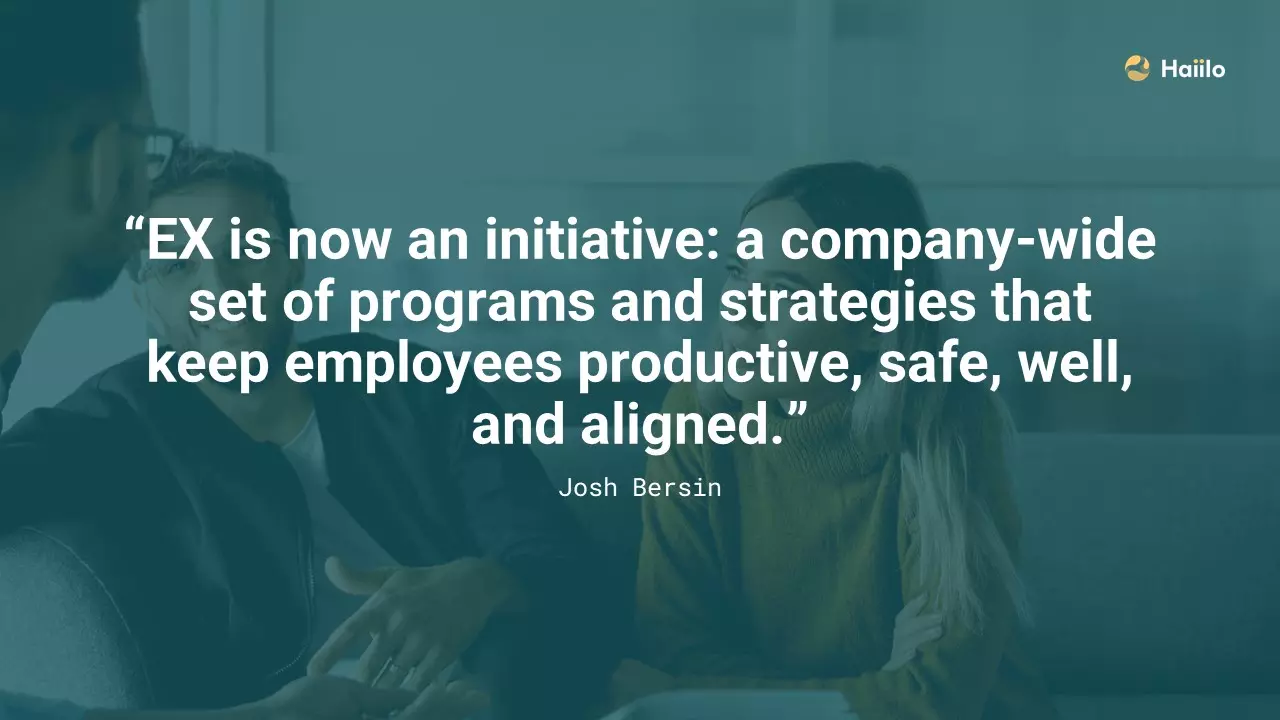
Outdated HR technology and programs
Proper workplace technology is a prerequisite for implementing a successful employee experience strategy. Companies need to update their technology to engage and motivate employees on an ongoing basis and to help HR teams and line leaders understand what the talent they employ expects and values.
Because of the increasing complexity of workplace technology stack, these solutions need to be integrated to provide seamless access to important tools, information, updates, and colleagues.
Take a look at this example of how organizations use technology to enhance employee experience.

Difficulties getting managers on board
While C-level executives are responsible for approving and supporting company-wide initiatives, managers take responsibility for implementing these initiatives within their teams or departments.
Manager’s buy-in about the benefits of providing positive employee experience is, therefore, crucial for the success of every employee experience strategy.
Yet, many organizations have a lot of work to do when it comes to embedding the employee-centric mindset among their managers.




